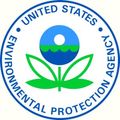The U.S. Environmental Protection Agency has ordered the coal-fired Portland Generating Station in Northampton County, PA to put an end to its interstate air pollution. In a 95-page decision issued on October 31, 2011, EPA ordered the plant, operated by GenOn REMA LLC (GenOn Energy), to reduce its sulfur dioxide emissions by 81 percent within three years. The decision also establishes interim emission rate limits which the plant must meet within one year. The decision constitutes final rulemaking, and adds a new rule at 40 C.F.R. Section 52.2039. It has been reported that this is the first EPA rulemaking directed at a single pollution source.
The EPA found that emissions of sulfur dioxide (SO2) from the Portland plant significantly contribute to nonattainment and interfere with maintenance of the 1-hour SO2 national ambient air quality standard (NAAQS) in New Jersey. The decision provides a detailed analysis of EPA's authority under Section 126 of the Clean Air Act to provide a remedy to downwind states subjected to pollution from out-of-state sources. It also reviews the emissions data, air pollution dispersion modeling, available control technologies, and other technical issues supporting its decision.
UPDATE: The EPA decison was published in the November 7, 2011 Federal Register (76 Fed. Reg. 69052, et seq.) and is available at http://www.gpo.gov/fdsys/pkg/FR-2011-11-07/pdf/2011-28816.pdf.







